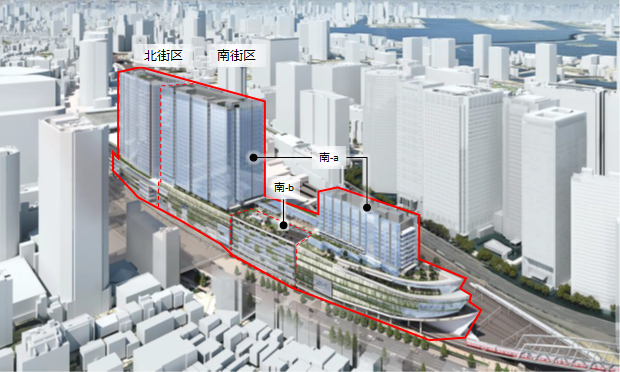Unauthorized parking is one of the most serious problems in real estate management and parking lot management.
As a nationwide real estate management company, we at INA & Associates are consulted daily by many real estate owners regarding unapproved parking. The problems such as "an unknown car is parked in my parking lot," "I can't get a response even if I call the police," and "I don't know how to deal with it" are unavoidable issues in real estate management.
The problem of unapproved parking is not just a nuisance; it can lead to legal trouble if not handled appropriately. On the other hand, there is also the risk of being held legally liable if you become emotional and take inappropriate measures.
In this article, we provide practical advice, based on our knowledge and experience as property management experts, on everything from the correct way to respond to unauthorized parking when you encounter it to effective preventive measures. While clarifying the legal basis, we will explain in an easy-to-understand manner for the general public.
Basic ways to deal with unapproved parking
Understanding the difference between public roads and private property
When considering how to respond to unapproved parking, the first important thing is to clearly distinguish whether the parking location is on a public street or private property. Depending on this distinction, the applicable laws and response methods will differ greatly.
Unauthorized parking on a public street is treated as illegal parking under Articles 44 and 45 of the Road Traffic Law. In this case, a report can be made to the police, who can crack down on the offender and order the vehicle to be moved. The Road Traffic Law is a law to maintain public safety and order, and the police have a duty to respond proactively.
On the other hand, the Road Traffic Law does not apply to unauthorized parking on private property. Unauthorized parking on private property, such as in parking lots, condominium lots, and commercial parking lots, is treated as a civil matter and constitutes a tort under Article 709 of the Civil Code. In this case, the police generally do not take any positive action due to the principle of "non-intervention in civil matters.
Actions to be taken immediately
When you discover unapproved parking, it is important to respond calmly and without emotion. Follow the steps below to take action step by step.
Step 1: Collect evidence
The first step is to collect solid evidence. Using the camera function on your smartphone, photograph the following items
Take pictures of the entire vehicle from multiple angles and record the license plate number in a clearly legible manner. Set the camera to automatically record the time the photo was taken, which is important evidence of the duration of unauthorized parking.
The parking location and the surrounding environment should also be photographed and recorded in a composition that clearly shows that the area is a no-parking zone or someone else's private parking lot. If there are signs or markings, include them in the photo to prove that the intention to prohibit parking was clear.
Step 2: Report to the Police
We recommend that you first report the incident to the police, even if it is on private property. Even if the police do not take direct action, a record of the report will be kept, which will be useful evidence in later legal proceedings.
When reporting the incident, please contact the police as a "suspicious vehicle report" and provide detailed information about the vehicle (make, color, license plate number) and the exact location where it is parked. A police officer may come to the scene and give you appropriate advice.
Step 3: Attach a warning letter
Once the evidence has been collected and the police have been notified, a warning letter should be affixed to the vehicle. Again, this must be done in an appropriate manner to avoid legal risk.
The warning should be placed in a manner that will not damage the vehicle, and should be tucked into the windshield wiper or lightly tucked into the side mirror. The act of taping it directly to the vehicle body may result in a charge of destruction of property.
It is important to avoid emotional expressions and state the facts plainly in the warning letter. We have confirmed that you are parking in a no-parking zone. Please move your vehicle as soon as possible. If you continue to park in this area, we will consider legal action," or something similar in a calm and objective manner.
Step-by-step response procedure
It is important to escalate the response to unauthorized parking in stages. The following table summarizes the response steps and specific actions to be taken.
| Steps | Response | Time required | Cost | Effectiveness |
|---|---|---|---|---|
| Phase 1 | Collect evidence, report to police, attach warning letter | Approx. 30 min. | Free of charge | Effective for minor unapproved parking |
| 2nd step | Identification of owner and sending of content-certified mail | 1-2 weeks | 3,000-5,000 yen | Encouragement to move by legal pressure |
| Step 3 | Sending a warning letter by attorney | About 1 week | 30,000-50,000 yen | High psychological pressure |
| Step 4 | Petition for civil conciliation | 1-3 months | Several thousand yen | Adjustment by public institution |
| Step 5 | Filing of civil suit | 6 months-2 years | Several hundred thousand yen | Obtaining an enforceable judgment |
As can be seen from this table, the initial stage is the most cost-effective, and in most cases, the problem can be resolved in the first two stages.
How to identify the owner
For continuous unauthorized parking, it is effective to identify the owner of the vehicle and negotiate directly with him or her.
In the case of regular vehicles
For regular vehicles, the owner's information can be obtained by applying for a "Request for Certificate of Registered Matters, etc." at the nearest Transport Branch Office or Vehicle Inspection and Registration Office.
The request must include the vehicle's license plate information and a letter stating the reason for the request. In the case of unauthorized parking, it is common to state "civil suit, etc." as the reason. A fee of approximately 300 yen is required.
In the case of light motor vehicles
For light vehicles, the same procedures are performed at the Japan Light Vehicle Inspection Association. Compared to regular vehicles, the procedures may be somewhat simplified.
However, there must be a valid reason for obtaining such information, and requests for mere curiosity or for the purpose of harassment will not be accepted. It is important to be able to clearly explain the damage caused by unauthorized parking and the need to negotiate with the owner.
Legal Actions and Effective Measures
Civil legal grounds
Unauthorized parking on private property constitutes a tort as defined in Article 709 of the Civil Code. A tort is an act that intentionally or negligently infringes on the rights or legally protected interests of another person, for which the person is liable for damages caused by the infringement.
In the case of unauthorized parking, it is considered as an act that infringes on the landowner 's or legitimate right holder's right to use the land. The act of using another person's land without the owner's consent, even if the parking is only for a short time, is legally considered an illegal act.
Based on this legal basis, the landowner can file the following claims against the unauthorized parker
Claim for compensation for damages
Monetary compensation can be demanded for damages caused by unauthorized parking. The most common method of calculating damages is to use the rates of nearby hourly parking facilities as a standard.
For example, if a nearby hourly parking lot charges 300 yen per hour, the amount of damages for 24 hours of unauthorized parking can be calculated to be 7,200 yen. However, the actual amount of damages may also take into account the location of the parking lot and the occupancy rate of the parking lot.
Claim for Exclusion of Obstruction
For continuous unauthorized parking, a claim for removal of the vehicle can be filed. This is recognized as a natural right based on the right of ownership, and the vehicle can be removed through compulsory execution by filing a petition to the court.
Actual claim for damages
There have been several notable cases in recent years regarding claims for damages for unauthorized parking.
High-cost compensation case from the Osaka District Court
In a judgment handed down by the Osaka District Court in 2018, damages of approximately 9.2 million yen were awarded for long-term unapproved parking over a period of approximately 11,166 hours. In this case, the fact that the unauthorized parker ignored repeated warnings and continued to park was evaluated as a highly malicious act.
This decision is an important case that shows that unapproved parking is not merely a minor nuisance but is legally evaluated as a serious violation of property rights.
Acceptance in a small case
On the other hand, the Osaka District Court also approved a claim for damages of 200 yen for unauthorized parking in a monthly parking lot for about 40 minutes. This case clearly shows that legal responsibility arises even for a short period of unapproved parking.
These precedents show that it is possible to calculate the appropriate amount of damages according to the duration and maliciousness of unapproved parking.
Warning by content-certified mail
If the owner can be identified, sending a warning letter by content-certified mail is effective. Content-certified mail is a system in which the post office certifies the content of the document and the fact of service, and is important as a preliminary step to legal proceedings.
Items to be included in the warning letter
The following items should be clearly stated in the warning letter by content-certified mail.
Objectively describe the facts of the unauthorized parking, and clearly state the parking location, period of parking, and detailed information about the vehicle in concrete terms. Mention the existence of photographs taken as evidence and show that there is no dispute about the facts.
As a legal basis, clearly state that the action constitutes a tort under Article 709 of the Civil Code, and assert the existence of a right to claim damages. It is important to state the specific amount of damages as well as the basis for calculation.
As a future response, demand the removal of the vehicle by a specified date and payment of damages, and clearly state that legal action will be taken if the customer does not comply. However, avoid threatening language and keep the letter calm and objective.
After sending the letter
After sending the content-certified mail, wait for the other party to contact you. In many cases, the other party will voluntarily remove the vehicle or pay compensation for damages due to the psychological pressure exerted by the content-certified mail.
If you are contacted by the other party, proceed with negotiations calmly. It is important to have a discussion based on the facts, without getting emotional.
Civil Conciliation and Civil Lawsuit
If the company does not respond to the warning by content-certified mail, the case will be shifted to legal proceedings.
Use of Civil Conciliation
The first option to consider is civil mediation at a summary court. Civil conciliation is a system in which a judge and a conciliation committee mediate discussions between the parties, and is less expensive and simpler than litigation.
In mediation, the mediator presents a reasonable solution after listening to the arguments of both parties. In cases of unauthorized parking, realistic solutions such as reduction of damages or payment in installments are often proposed, and both parties may be able to reach a satisfactory result.
Filing a civil lawsuit
If mediation is unsuccessful or the other party does not agree to mediation, a civil lawsuit is filed. In the lawsuit, the parties will prove the facts based on evidence and seek a legal judgment.
In a lawsuit for unapproved parking, the following points are generally disputed.
Photographs taken or records of reports to the police are important evidence of the fact of unapproved parking. Whether or not the intention to prohibit parking was clearly expressed is also judged by the condition of the signage and signs.
The amount of damages will be calculated based on the market rate of nearby parking lots and the opportunity loss actually incurred. Since the burden of proof is on the plaintiff, sufficient evidence must be prepared.
Vehicle Removal by Compulsory Execution
If the plaintiff has won a judgment in a civil lawsuit and the other party does not perform voluntarily, the vehicle can be removed by compulsory execution.
Compulsory execution is a legal procedure conducted by a court execution officer, and the vehicle can be forcibly removed regardless of the debtor's will. However, the cost of execution is borne by the obligee, so careful consideration of cost-effectiveness is required.
The removed vehicle will be stored in an appropriate location by the bailiff and the debtor will be notified of the delivery. The storage costs will also be borne by the debtor, but it is important to discuss with the bailiff in advance how to handle the vehicle if it is not picked up for an extended period of time.
Preventive measures and long-term solutions
Effective signage installation
The most effective measure against unauthorized parking is proactive prevention. Proper signage installation can thwart the intent of unauthorized parking before it occurs.
Location and visibility of signs
It is important that signs be placed in locations where they are clearly visible from the approach to the parking lot. The sign should be placed in a location where the driver of the vehicle will see it before parking, specifically in front of the entryway or in front of the parking space.
It is recommended that reflective signs or signs with LED lighting be selected so that they are visible at night. It is also important to choose weather-resistant materials so that the text can be read even in the rain.
Choosing effective wording
The wording of the sign should be clear in its legal basis, but not too overbearing. The following wording is effective
Unauthorized parking is strictly prohibited and legal action will be taken as soon as it is discovered.
These statements have a psychological deterrent effect by clearly indicating the possibility that unapproved parking may lead to legal problems.
Types and Features of Signs
| Types of Signs | Installation cost | Durability | Visibility | Mobility | Applicability |
|---|---|---|---|---|---|
| Stand-alone signboards | 5,000-15,000 yen | Medium | High | Possible | Temporary measure |
| Wall signage | 10,000-30,000 yen | High | High | Not available | Permanent measures |
| Stand signboard | 8,000-20,000 yen | Medium | High | Possible | Flexible placement |
| Electric signboard | 50,000-100,000 yen | High | Very high | Difficult | High-end facilities |
If you want to keep initial investment low, we recommend starting with a standing sign and moving to a permanent wall sign after confirming its effectiveness.
Physical measures
When the effectiveness of signage warnings alone is limited, physical measures can be used in combination to more reliably prevent unauthorized parking.
Use of triangular cones and chains
The easiest and most effective physical measure is a combination of triangular cones andchains. By placing cones at the entrance to the parking space and connecting them with chains, vehicles can be physically prevented from entering the space.
Triangular cones are highly visible and easy to install and remove, allowing for flexibility as needed. However, they must be checked regularly because of the risk of tipping over in high winds or being moved by a malicious third party.
Installing poles and gates
A more permanent measure is the installation of fixed poles andmovable gates. These facilities require an initial investment, but in the long run they are the most reliable means of preventing unauthorized parking.
In the case of a movable gate, a remote control or card key can be distributed to legitimate users, preventing unauthorized parking without sacrificing convenience. Although the installation cost is expensive, ranging from 500,000 yen to 2 million yen, it is worth considering for large parking lots or when there is continuous unapproved parking damage.
Flap Plate System
Flap board systems have been attracting attention in recent years. This is a system in which a board installed in the parking space is lowered by the weight of the vehicle, and when the vehicle leaves the space, the board is raised to lock the vehicle.
Legitimate users can leave the parking space by paying a fee in advance or unlocking it with a special card, but unauthorized parkers cannot leave the parking space unless they pay a cancellation fee. The initial cost is approximately 300,000 to 500,000 yen per vehicle, but it has a definite effect of preventing unapproved parking.
Installation of Security Cameras
The installation of security cameras is effective in both deterring unauthorized parking and collecting evidence.
Deterrent effect
When used in combination with stickers or signs indicating that a security camera is installed, it has a high psychological deterrent effect. Many unauthorized parkers tend to avoid parking when they become aware of the camera's presence because they do not want to leave evidence.
Evidence collection function
If unauthorized parking actually occurs, the security camera footage is conclusive evidence. The start and end times of parking are accurately recorded, playing an important role in the calculation of damages and legal proceedings.
Points to keep in mind when installing security cameras
When installing a security camera, it is necessary to give sufficient consideration to the protection of privacy. The camera should be installed only within your own premises and should be adjusted so that it does not capture images of adjacent residences or public roads.
In addition, from the perspective of the Personal Information Protection Law, you are required to install signs clearly indicating that you are filming and to properly manage the video data. The storage period of recorded data should be limited to about one month, and it is important not to store the data for longer than necessary.
Reinforcement of the management system
To prevent unauthorized parking on an ongoing basis, it is essential to strengthen the daily management system.
Implementation of Regular Patrols
Regular patrols of parking lots should be conducted to detect unapproved parking at an early stage. The frequency of patrols should be adjusted according to the occurrence of unapproved parking, but it is recommended that patrols be conducted at least twice a week.
During patrols, please check not only parked vehicles, but also the condition of signs and equipment, and repair or replace them as necessary.
Cooperation with Neighbors
Cooperation with neighbors and businesses is another important factor. Please establish a contact system when unauthorized parking is detected and build an environment that enables prompt response.
More effective measures can be taken if the entire community works together to prevent unapproved parking. It is also effective to consider information sharing and joint measures through organizations such as neighborhood associations and shopping associations.
Use of specialized contractors
For large parking lots and ongoing problems, consider outsourcing to a specialized parking management company. Specialized companies have a wealth of experience and know-how, and can provide efficient measures against unapproved parking.
Outsourcing costs range from several tens of thousands to several hundred thousand yen per month, but may be a cost-effective option when considering the loss caused by unapproved parking and the time required to deal with it.
Measures according to local characteristics
Countermeasures against unapproved parking should be customized according to the characteristics of the area and the location of the parking lot.
Measures in commercial areas
In commercial areas, unapproved parking by shoppers for short periods of time tends to occur frequently. In this case, it is effective to install signs clearly indicating time limits and introduce a pay parking system for short-time users.
Measures in Residential Areas
In residential areas, long-term unapproved parking by nearby residents can be a problem. In this case, it is important to prioritize resolution through discussion with neighbors and seek mediation from the neighborhood association, etc., if necessary.
Measures to be taken near stations
All-day parking by commuters can be a problem in the vicinity of train stations. In this case, a combination of physical measures and a strict management system is required, and outsourcing to a specialized contractor should be considered.
Conclusion
When dealing with unapproved parking, it is important to take a step-by-step and legally based approach, rather than an emotional one.
Please understand the difference between public roads and private property, and choose the appropriate response method for each. Unauthorized parking on a public street can be resolved by reporting it to the police, but on private property, it is a civil matter that must be handled on your own.
Remember the importance of evidence collection, and when you discover unauthorized parking, be sure to take pictures and keep a record of your report to the police. These pieces of evidence will play a decisive role in later legal proceedings.
Preventing unauthorized parking before it occurs is most effective through the implementation of preventive measures. A combination of several measures, including the installation of appropriate signage, physical measures, and security cameras, will ensure effectiveness.
Regarding the use of legal measures, starting with a warning by content-certified mail and proceeding to civil conciliation or civil litigation as necessary, appropriate compensation for damages can be obtained. However, we recommend that you carefully consider the cost-effectiveness and seek professional advice.
Next Action
If you are troubled by unauthorized parking, please follow the steps below to take action.
1. Assess the current situation: Record the frequency of unapproved parking, time of day, and vehicle characteristics.
2. Consider preventive measures: Consider installing signage and physical measures
3. Establish a management system: Establish a system of regular patrols and cooperation with neighbors.
4. Consult with experts: Consult with property management experts for ongoing issues
INA&Associates offers a wide range of consultation services for real estate management. With regard to unauthorized parking countermeasures, we can offer the best solutions based on our extensive experience and expertise. Please feel free to contact us if you have any questions or concerns.
Frequently Asked Questions
Q1:Can't the police deal with unapproved parking on private property even if I report it to them?
A1:Certainly, unauthorized parking on private property is not covered by the Road Traffic Law, so we cannot expect a positive response from the police. However, reporting it has the following advantages.
First, a record of the report will be kept, which will prove that "proper steps were taken" in later legal proceedings. In addition, a police officer may be able to come to the scene and give you appropriate advice at that time.
Furthermore, it makes sense to report a vehicle as a "suspicious vehicle report" because the vehicle may be stolen or the driver may be involved in some other incident.
However, since the police cannot be expected to move the vehicle or punish the driver, it is necessary to proceed with civil measures in parallel.
Q2:Can I have an unauthorized vehicle towed without permission?
A2 :Absolutely not. The act of moving an unauthorized vehicle without the owner's consent is legally prohibited as "self-help.
Even if the vehicle is parked without permission on your property, moving it without permission carries the following legal risks
Damage to property: If you damage the vehicle, you may be charged with destruction of property under Article 261 of the Penal Code.
Theft: If you move the vehicle, even temporarily, you may be guilty of theft.
Liability for damages: If your vehicle is damaged while being moved, you may be liable for damages, including repair costs.
The appropriate course of action is to remove the vehicle as an enforcement action by a court enforcement officer after obtaining a favorable judgment through civil litigation. Although time-consuming and costly, this procedure is necessary to avoid legal risk.
Q3:Does it have legal effect if I write "fine of ○0000 yen" on a sign for unapproved parking?
A3: It has no legal effect. A "fine" set unilaterally by a private party has no legal basis, and there is no obligation to pay it.
However, depending on the content of the description on the sign, a certain effect can be expected.
Examples of effective descriptions: - "Unauthorized parking will result in a claim for damages.
-Unauthorized parking will result in a claim for damages.
Legal action will be taken" - "Legal action will be taken"
-We will charge you an amount equivalent to the cost of parking in the vicinity.
These statements indicate that the claim is based on actual damages and have a psychological deterrent effect.
Examples of statements that should be avoided: - "A fine of 100,000 yen will be imposed.
-A fine of 100,000 yen.
-50,000 yen for violation
- "Penalty 30,000 yen"
These statements use the terms "fine" and "penalty," which can only be imposed by public authorities, and can be misleading.
It is important that the wording on signs be factual and avoid overly intimidating expressions.
Q4:What amount of damages can be claimed?
A4:The amount of damages is calculated based on the actual damages incurred. The general calculation methods are as follows
Hourly parking fee standard:.
The amount will be calculated based on the rates charged by nearby hourly parking facilities. For example, 24 hours of unauthorized parking in an area where the parking fee is 300 yen per hour would result in damages of 7,200 yen.
Monthly parking fee standard:.
In the case of long-term unauthorized parking, the monthly parking fee may be calculated on a daily basis. In the case of unauthorized parking for 30 days in an area where the monthly parking fee is 30,000 yen per month, the damage would be 30,000 yen.
Consideration of opportunity loss:.
In some cases, the loss of opportunity for the user of the parking lot to actually use the parking lot may also be considered as damages.
Reference amounts based on judicial precedents: -40 minutes of unauthorized parking: ¥30,000
-40 minutes of unauthorized parking: 200 yen (Osaka District Court)
-Unauthorized parking for 11,166 hours: approximately 9,200,000 yen (Osaka District Court)
However, since the burden of proof for the amount of damages is on the claimant, it is necessary to investigate the rates of nearby parking lots and prove the actual opportunity loss. Please be sure to keep your claim within a reasonable range, as an excessive claim will not be approved.
Q5:How should I deal with unauthorized parking on condominium premises?
A5:It is important to respond to unauthorized parking on condominium premises in cooperation with the management association and management company.
Response by the management association:.
First, please report the matter to the board of directors of the management association, and decide on a policy for dealing with the situation as an association. Unauthorized parking is a matter related to the management of common areas, and if you take action on your own, it may cause problems.
Use of a management company:.
If a management company is commissioned to handle unapproved parking, the company can be asked to handle unapproved parking as part of its duties. The management company has a wealth of experience and can suggest appropriate measures.
Notification to residents:.
Please inform residents of the prohibition of unapproved parking through bulletin boards and circulars. Clarifying the rules for visitor parking as well will help prevent problems.
Step-by-step measures: 1.
1. Attach a warning sign (in the name of the management association)
2. Alert all residents
Identification of the owner by the management company
Warning by content-certified mail
Consideration of legal action
In condominiums, it is important to take neighborhood relations into consideration, and it is important to resolve the problem calmly while avoiding emotional confrontation.

Daisuke Inazawa
Representative Director of INA&Associates Inc. Based in Osaka, Tokyo, and Kanagawa, he is engaged in real estate sales, leasing, and management. He provides services based on his extensive experience in the real estate industry. Based on the philosophy that “human resources are a company's most important asset,” he places great importance on human resource development. He continues to take on the challenge of creating sustainable corporate value.

.png)












![Definition, Role, and Selection Criteria for Real Estate Management Companies [Focusing on the Importance of Human Resources]](https://app.ina-gr.com/hs-fs/hubfs/AI-Generated%20Media/Images/The%20image%20shows%20a%20businessman%20in%20a%20suit%20holding%20a%20smartphone%20and%20concentrating%20on%20checking%20something%20against%20the%20backdrop%20of%20a%20modern%20office%20building%20Beside%20him%20is%20a%20large%20glass%20window%20letting%20in%20sunlight%20The%20businessmans%20expression%20is%20serious%20his%20ey.jpeg?width=550&height=395&name=The%20image%20shows%20a%20businessman%20in%20a%20suit%20holding%20a%20smartphone%20and%20concentrating%20on%20checking%20something%20against%20the%20backdrop%20of%20a%20modern%20office%20building%20Beside%20him%20is%20a%20large%20glass%20window%20letting%20in%20sunlight%20The%20businessmans%20expression%20is%20serious%20his%20ey.jpeg)
